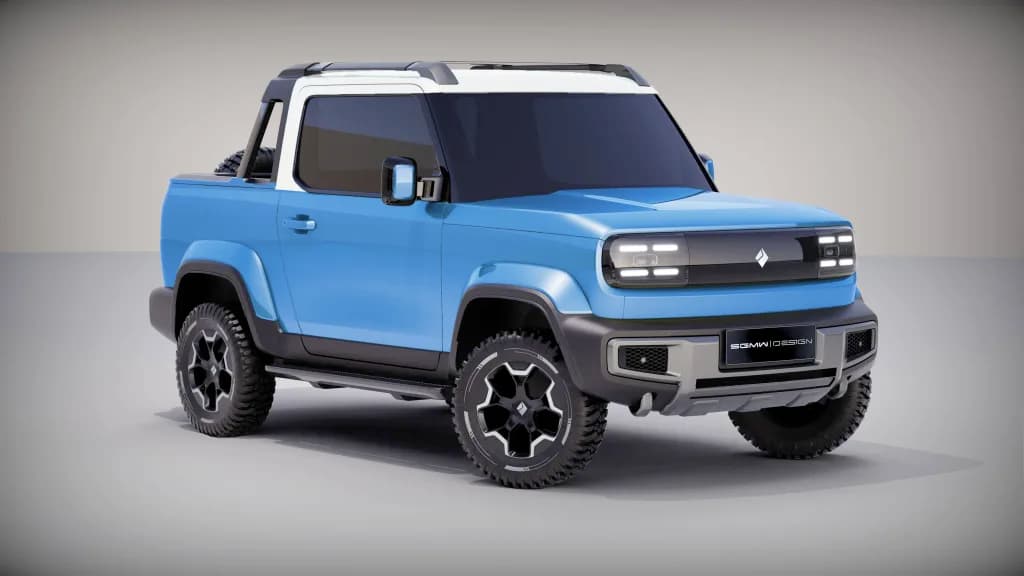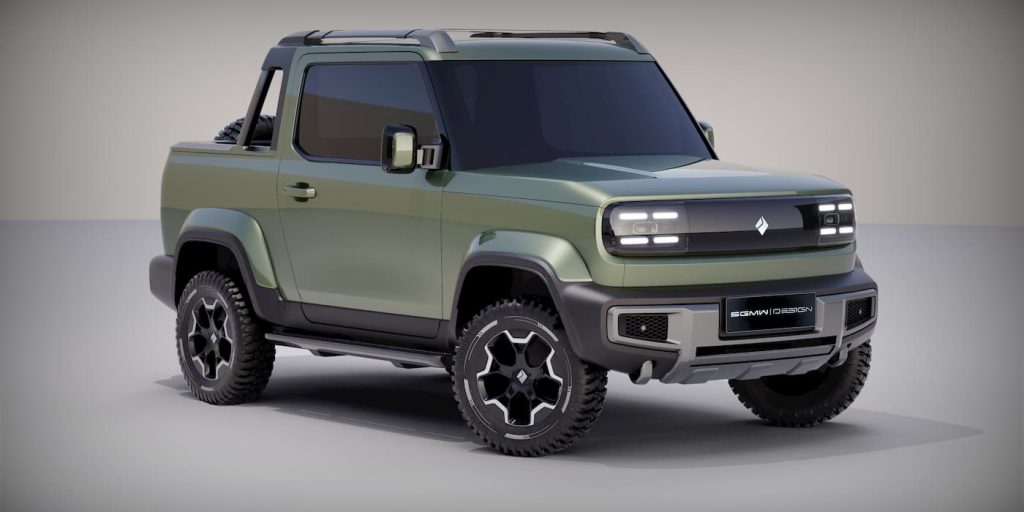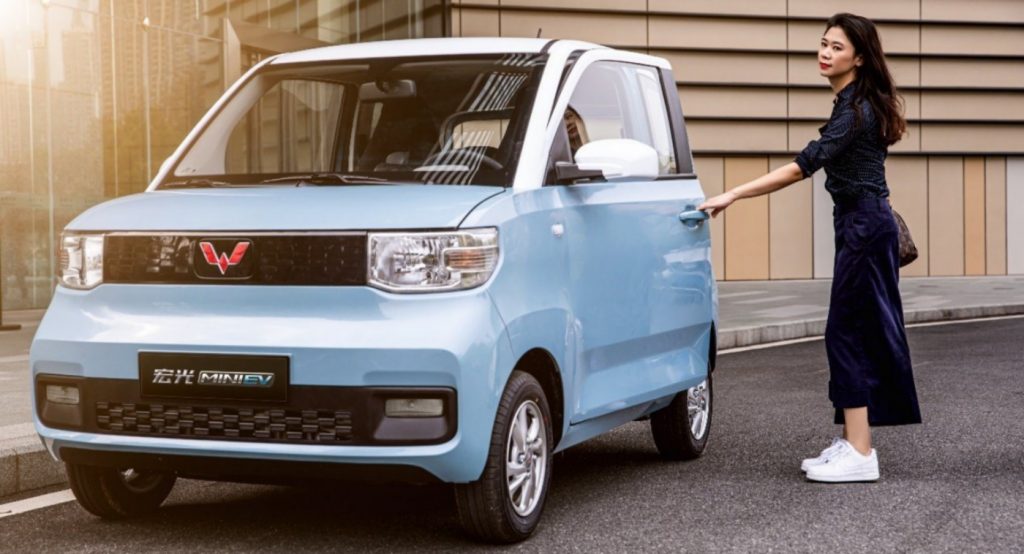
There’s been a lot of fuss about the supposed “$14,000 GM electric mini-truck” recently, but you probably shouldn’t get too worked up about it.
That’s not to say that electric mini-trucks aren’t an exciting new field. I’m a proud owner of one and I love the thing. Mini-trucks, and especially electric mini-trucks, are incredibly useful and highly efficient machines. Though the best part about these fun little utility vehicles is likely their low prices compared to pricier electric pickup trucks.
The most recent model making headlines, the GM-backed Baojun Yep EV, even offers some fairly respectable performance numbers. Despite being smaller than a tiny Fiat 500 subcompact city car, it features a 50 kw (67 horsepower) electric motor, a top speed of 100 km/h (62 mph) and a city range of nearly 300 km (188 miles) per charge.
Obviously it’s not meant to tow a Boston Whaler down the highway. But for around-the-town jobs it’d be plenty.
Just don’t start taking out your checkbook when you hear about many of the new mini e-truck models swirling around in the news. That’s because you can’t have one. Here’s why.

Most of the time these stories are misleading for a few reasons. Take the US $14,000 GM mini-truck above, for example. First of all, it’s not a GM model. And second of all, it doesn’t cost US $14,000. The entire premise is a lie.
That vehicle, the Baojun Yep EV, is technically “GM-backed” thanks to a joint venture between General Motors and the two state-owned Chinese automotive companies SAIC Motor and Liuzhou Wuling Motors. But GM is a minority owner in the deal. It’s less of a GM vehicle and more a partially paid for by GM vehicle.
Next, it doesn’t really cost US $14,000. First of all, no one knows what the price tag will be for the Baojun Yepp EV truck when it eventually launches. It is based on a similar SUV-format vehicle that itself has only been estimated to launch at 100,000 Chinese Yuan later this summer.
Sure, ¥100,000 is approximately equal to US $14,000 at current exchange rates. But that doesn’t make this a US $14,000 vehicle. As anyone who reads my long-running weekly column Awesomely Weird Alibaba Electric Vehicle of the Week will already know, Chinese vehicle prices don’t translate very well into US prices.

The only way you could buy one of these vehicles for approximately US $14k is if you did it in China. Which is what I did, once. A couple summers ago I paid a Chinese factory US $2,000 for a much lower spec (5 horsepower, 25 mph) electric mini-truck.
By the time it was all said and done, I had paid an additional US $6,000 or so in freight charges, import duties, US taxes and tariffs, US customs fees, trucking and other expenses to get it into my family’s driveway in Florida.
I did the same thing with a five-seater electric boat. I paid the factory in China US $1,080 but wound up with around a US $4,500 lighter bank account by the time the boat slipped into a Florida pond.
And that was for a private import. Imagine if I was a company trying to turn a profit on these things. That US $2,000 Chinese mini-truck could easily turn into a US $12,000 or more mini-truck, stateside. And that’s a comparatively low-spec vehicle.

The same goes for other popular electric microcars from China. We often hear about the “$5,000 Wuling Mini EV” electric micro-car, which is a vehicle that frequently gets tossed around my comment section whenever I write about an electric bike that costs over US $5,000.
But don’t be fooled into thinking that’s a US $5,000 car. It’s not. It’s a ¥30,000 car.
Sure, if you flew to China with five grand in your pocket, converted it to Chinese Yuan at the airport, and then walked into a Wuling dealership, you could probably drive out a few hours later in a shiny new micro-car. But you aren’t going to do that, are you?
Instead, you would need an enterprising importer to bring a literal boatload of them to the US (or wherever you live), somehow get them homologated for federal motor vehicle safety standards, then sell one to you. If you got out of that transaction for under US $15,000, you’d be extremely lucky (consider that a new golf cart in North America can easily US $10,000). And you’d still have a tiny 25 mph (de-regulated to US LSV laws) Chinese car for the price of a cheap highway capable vehicle in the US.

This isn’t to say that electric mini-trucks don’t exist in the US. There are street legal electric mini-truck manufacturers like the Texas-based startup AYRO, though they’re still getting rolling with upcoming production. Plus, the starting prices are closer to $25,000, which is a bit higher than those domestic market Chinese electric mini-trucks.
There are also a few more or less scrupulous importers of Chinese electric mini-trucks, though almost none are street legal, even if the shadier importers claim them to be.
But for the most start, the few real options are the pricier models from real US manufacturers.
Maybe things will change. As electric mini-trucks grow in popularity, perhaps more companies will enter the fray and prices will come down. Or perhaps Chinese models will actually be homologated and imported to the US at reasonable prices. Either would be great news considering the ballooning size of US trucks and SUVs that contribute to climbing road deaths, greater emissions and increased road wear. But for now, there’s no point in getting excited over misleading claims of cheap electric trucks. They simply don’t exist yet, unfortunately.
Author: Micah Toll
Source: Electrek



